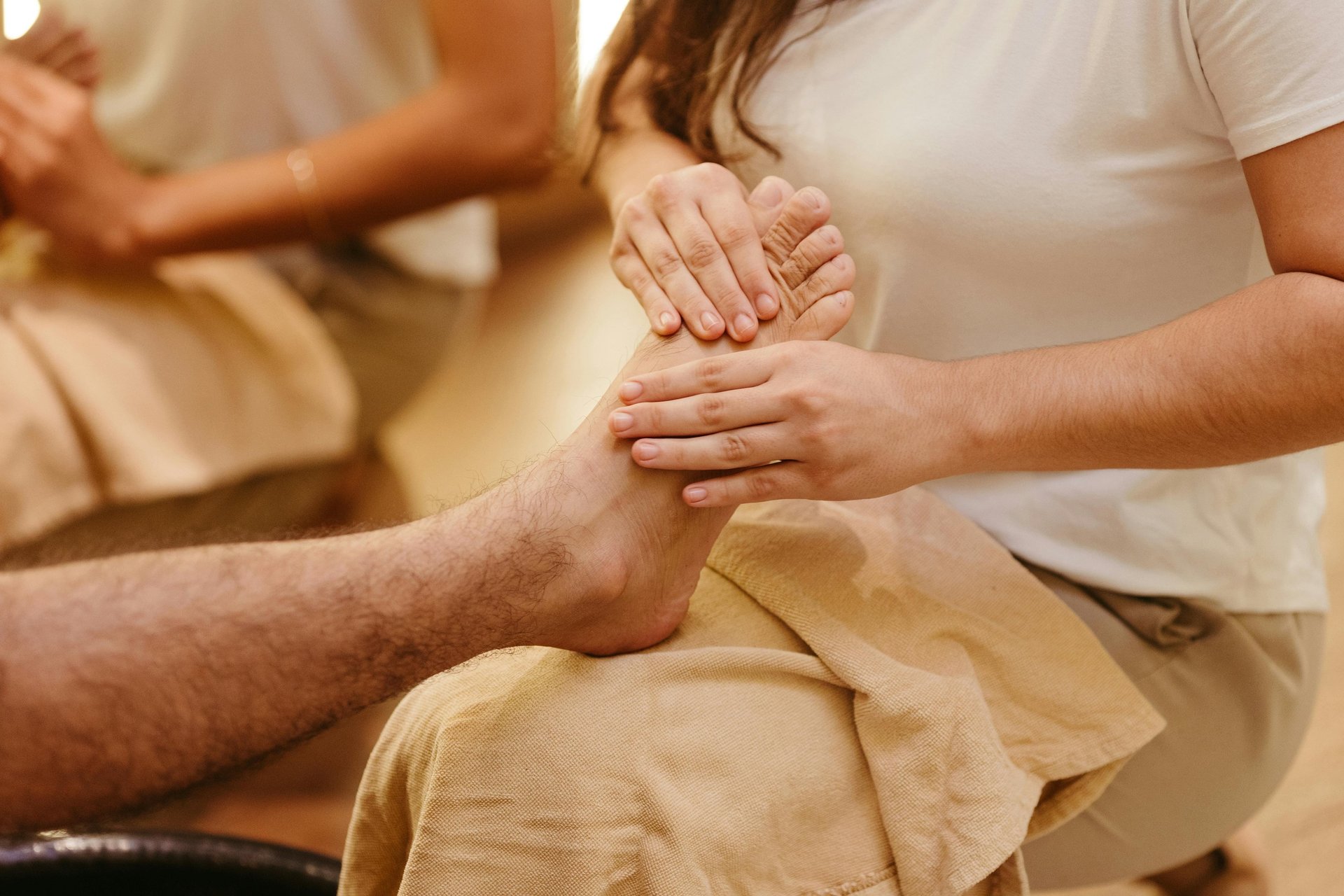
What is foot reflexology?
Foot reflexology is a holistic therapy that focuses on the feet to promote overall health and well-being. It is based on the principle that specific reflex points on the feet are linked to different organs, glands, and systems of the body. By gently applying pressure to these points, reflexologists aim to clear energy blockages, stimulate circulation, and activate the body’s natural healing abilities. Foot reflexology has ancient roots dating back over 4,000 years, with evidence from Egypt, China, and India showing the use of foot massage for healing. Modern reflexology was developed in the early 20th century by Dr. William Fitzgerald’s zone therapy and refined by Eunice Ingham, who mapped reflex points on the feet. Today, it is practiced worldwide as a holistic therapy for relaxation and wellness.



Frequently asked questions
What is foot reflexology?
Foot reflexology is a natural healing therapy that involves applying pressure to specific points on the feet that correspond to organs and systems in the body.
How does reflexology work?
It works on the principle that stimulating reflex points improves circulation, releases tension, and helps the body restore its natural balance.
Can reflexology help with headaches or migraines?
Yes. By reducing tension and improving circulation, reflexology may relieve headache symptoms and promote relaxation.
What are the main benefits of foot reflexology?
It promotes relaxation, reduces stress, improves sleep, boosts blood flow, relieves pain, and enhances overall well-being.
Does reflexology help with stress and anxiety ?
Absolutely. Reflexology activates the body’s relaxation response, lowers stress hormones, and creates a sense of calm.
Is reflexology a type of massage?
No. Reflexology is different from a massage. While massage relaxes muscles, reflexology targets pressure points linked to internal organs and energy pathways.
Is reflexology safe for everyone?
Yes, in most cases. However, people with foot injuries, fractures, open wounds, or certain medical conditions should consult a doctor first.
Can reflexology improve digestion?
Yes. Stimulating reflex points linked to the digestive system can help improve gut function and relieve discomfort.
How long does a reflexology session usually last?
Most sessions last 30 to 90 minutes, depending on the client’s needs and preferences.
How often should I get reflexology treatments?
For general relaxation, once a week or bi-weekly is ideal. For specific conditions, more frequent sessions may be suggested.
Will reflexology help me sleep better?
Yes. Reflexology calms the nervous system, reduces stress, and often leads to deeper, more restful sleep.
What can I expect in my first reflexology session?
You’ll relax in a chair or bed while the reflexologist applies pressure to specific areas on your feet. Many clients feel relaxed, sleepy, or refreshed afterward.
Does reflexology hurt?
No, reflexology should not hurt. Some pressure points may feel tender, but overall it’s a relaxing and comfortable experience.
Can reflexology help with chronic pain?
Yes. Reflexology may help relieve chronic pain conditions such as back pain, arthritis, or plantar fasciitis by improving circulation and reducing tension.
Is reflexology a proven medical treatment?
Reflexology is a complementary therapy. While not a substitute for medical treatment, many people find it highly effective for relaxation, stress relief, and overall wellness.
Does reflexology help with diabetic patients?
Reflexology can help diabetic patients by improving circulation, reducing stress, and easing neuropathy discomfort, but it should be used along with proper medical care.

Ready to Reset?
Take a moment for yourself — because your well-being is worth it. Book your next visit and step into a space of calm, care, and quiet renewal.
